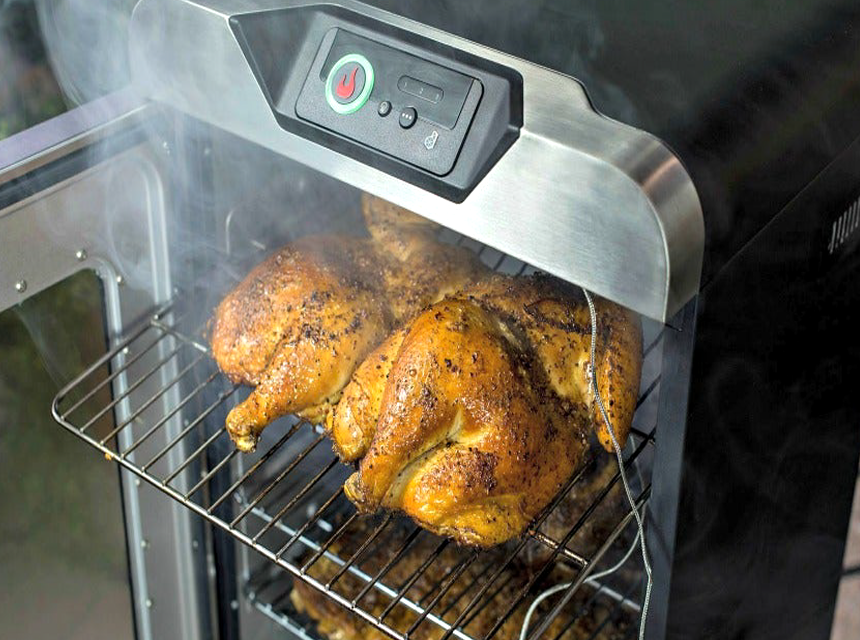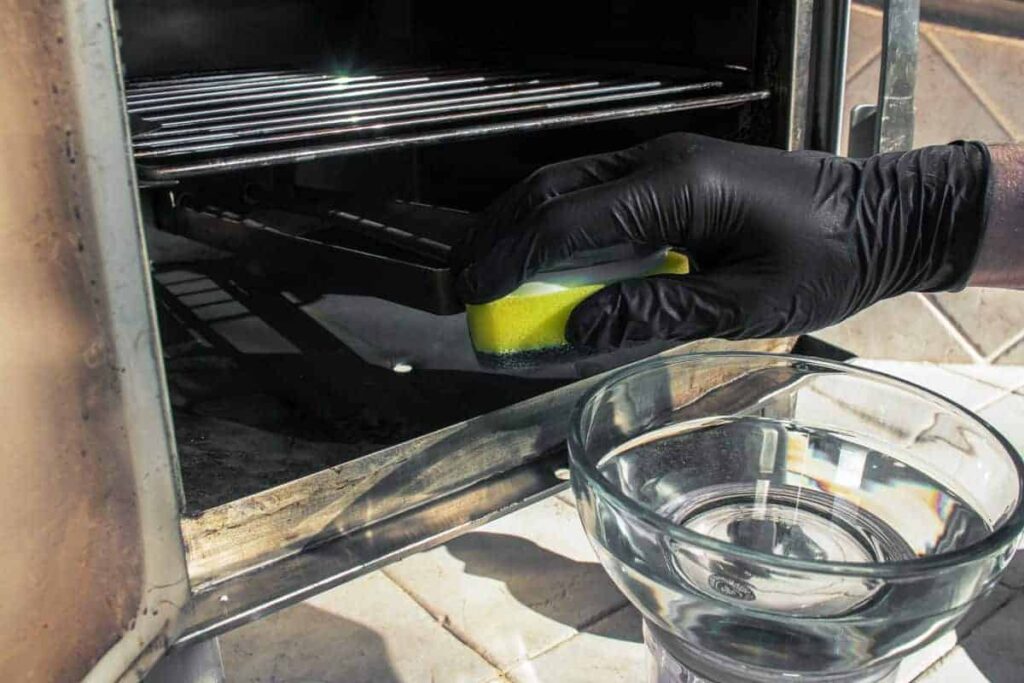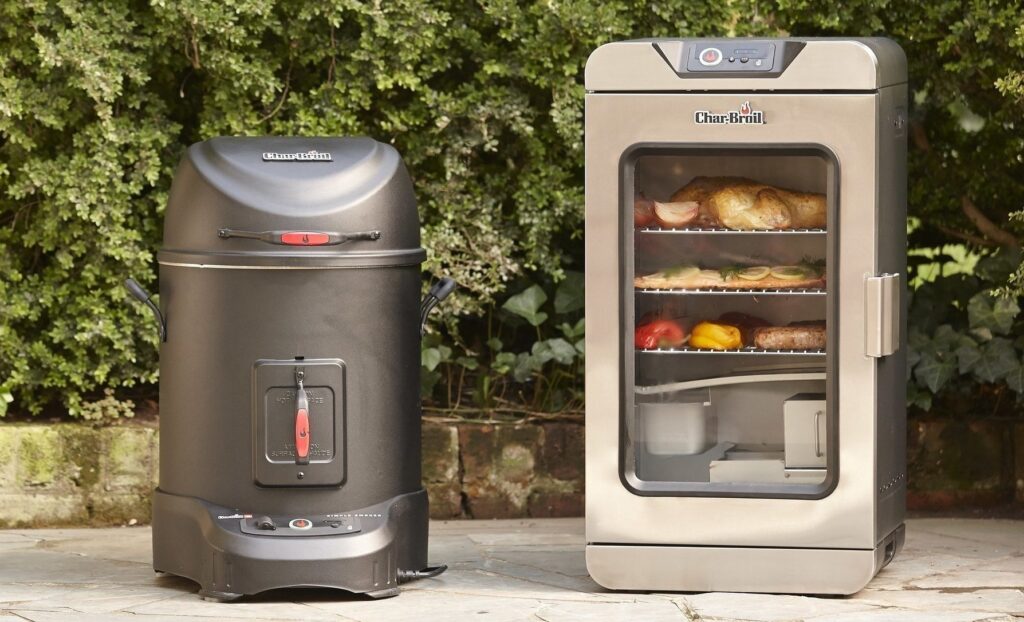It’s official. Smoking food is once again on the list of top things to do over the weekend. Whether you prefer the fast pace of a hot smoking process or the subtle flavors of a slow smoke, the point is, there’s a smoker somewhere just itching for you to use it.
But, how different are the two? When it comes to cold smoking vs hot smoking, is one better than the other? Let’s have a look at what sets these two processes apart and what they have in common. To ensure your smoked meats reach the ideal internal temperature, be sure to use an accurate digital meat thermometer like one of the best meat thermometers. Monitoring with a thermometer ensures food safety.
Hot smoking serves one purpose. To cook the meat for immediate consumption. The average smoking temperature for this type of smoking is anything between 140 and 300°F, depending on the type of food being smoked.
When you’re hot smoking, you’re looking at an estimated time frame of between 12 and 24 hours.
Hot smoking is popular because it’s quicker than cold smoking. While it does take several hours longer than grilling or regular barbequing, hot smoking adds a rich smoky flavor to the food being smoked. Let’s have a look at the quickest way to produce hot smoke.
It might sound obvious to say you need a smoker, wood, and food. But, if you’re new to smoking, you might need some advice in choosing the perfect smoker for you. Let me share one of my favorites with you.
One of the most popular ways of hot smoking is with an electric smoker. With a quality smoker like the Masterbuilt Mb2007117, you’ll have the advantage of a digital panel control. The panel gives you an on/off option and also shows you the cooking temperature and time. This is perfect for keeping track of the temperature to ensure your meat doesn’t get ruined because of the wrong temperature. The thermostat control also allows for even and consistent smoking, giving the smokiest flavor all around!
Another advantage of a standard smoker is its capacity. On average you can fit:
Sounds like the perfect barbecue!
Some smokers also have wood chip loading systems on the front or side, which makes it super easy to add wood chips without opening the door. If possible, the door shouldn’t be opened often as it will affect the temperature of the smoker.
Since the point of hot smoking is to eat the food within a few hours, it means you can hot smoke just about anything. Meats don’t have to be cured and require only a light seasoning rub. The most popular hot smoke choices include:
One of the key things to avoid when following the hot smoke process is to refrain from using treated or resinous wood varieties. These types of wood, which include pine, release toxins when heated up, will poison your food.
During the smoking process, avoid lifting or opening the smoker lid to “check-up” on the food. Doing this will cause a loss of heat and smoke. This can set your cooking time back by at least 30 minutes.
Cold smoking is primarily used as a method of food preservation. While hot smoking is a faster way to cook meat, cold smoking imparts more flavor. It’s important to maintain the temperature during the process.
Cold smoking relies on smoke created by low heat to penetrate the food you’re smoking. Using this process gives the meat a smoky flavor and it can last for months if stored correctly.
The process for cold smoking is very simple. The steps to follow include the following:
When it comes down to which smoker to use, a cold vs hot smoker is slightly different. Since your food must be kept apart from the smoke, you’ll need a little more than your regular smoker.
If you’re not feeling brave enough to modify your existing smoker to facilitate cold smoking, you can always invest in a cold smoke generator.
Ideally, you might want to invest in a Smoke Daddy Magnum P.I.G. Cold Smoke Generator, an impressive, market-leading unit. It can work for hot and cold smoking. You’ll need a generator that can attach to your existing smoker, allowing you to customize your smoker to your exact needs.
Some smoking might require an overnight session. The great news is, a smoke generator is designed for unattended smoking, allowing you to focus on other things. No need to spend the whole day and night guarding your appliance and food!
Foods that taste awesome when prepared using the cold smoke method include the following:
When it comes to cold smoking, the most crucial thing to avoid is letting the temperature level drop during the smoking process. A dropped temperature can result in bacterial growth or even botulism which can be fatal. If you’re cold smoking for the first time, ensure your equipment works properly and reaches the necessary temperature.
Anyone who has ever asked for smoking tips has undoubtedly been told about smoke rings. But, what exactly are they and is there any danger to them?
Hemoglobin, a protein found in red blood cells, primarily carries oxygen to the different parts of the muscles. Myoglobin stores the oxygen in muscles, some of which is released during the slaughtering process. However, some remain trapped in the muscles and form myowater (muscle tissue water). When the meat is cooked over wood or charcoal, the myowater reacts with nitrogen dioxide.
Grilling in the open air allows for the nitrogen oxide to be released into the air. When smoking, the chamber is closed and the chemicals are absorbed into the meat. This will give the meat a bitter taste and is unhealthy to consume. It’s important to do thorough research on these smoke rings to find the best way to avoid them during the smoking process.
Newbie food smokers should know, one piece of wood is not like another. Certain types of wood make for better smoking than others. Let’s get an idea of what’s best for your next smoking session.
To summarize the key differences between hot smoking and cold smoking, I’ve drawn up a side-by-side comparison.
The main difference when it comes to hot smoking meat vs cold smoking meat is the length of smoking and the curing process. Hot smoking takes longer but doesn’t require curing. Let’s have a look at a comparison of what you can smoke.
| Hot Smoking | Cold Smoking | |
| Meat | Yes | Yes, if cured first |
| Fish | Yes | Yes, if cured first |
| Vegetables | Yes | Yes, some |
| Cheese | Yes | Yes |
| Nuts | Yes | Yes |
| Spices | No | Yes |
The important point to remember during the smoking process is the temperature. Invest in a quality thermometer that will give the correct temperature at all times. This is especially necessary with cold smoking. Wrong temperatures in cold smoking can lead to illness. Let’s have a look at some crucial pointers on each smoking process.
| Hot Smoking | Cold Smoking | |
| Temperature | 126 to 176°F | 68 to 80°F |
| Time | 1 to 24 hours | 12 – 24 hours |
| What you should remember | Curing not required | Meat must be cured |
A distinctively smoked flavor is what sets smoking apart from other cooking methods. With its flexibility, it’s relatively easy to smoke anything from cheese to your favorite cut of meat.
While there are a few significant differences in the way cold smoke vs hot smoke is done, both processes yield delicious, smokey flavored foods. The quintessential difference is whether you want to prepare food for the same day or whether you’d like to preserve it for some time later.
Not only is it fun, but smoking food is also a very versatile way of preparing food. When it comes to deciding which is better between cold smoking vs hot smoking, there isn’t a definitive answer. Both are equally great options and present a unique and tasty, smokey flavor to your next meal!





